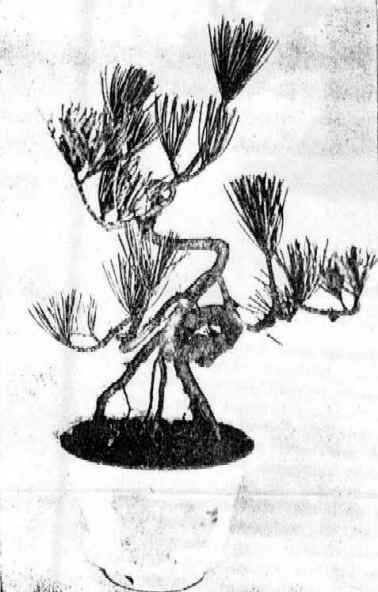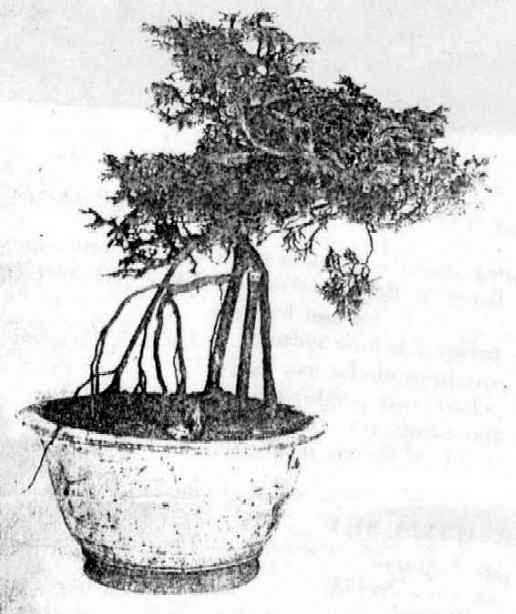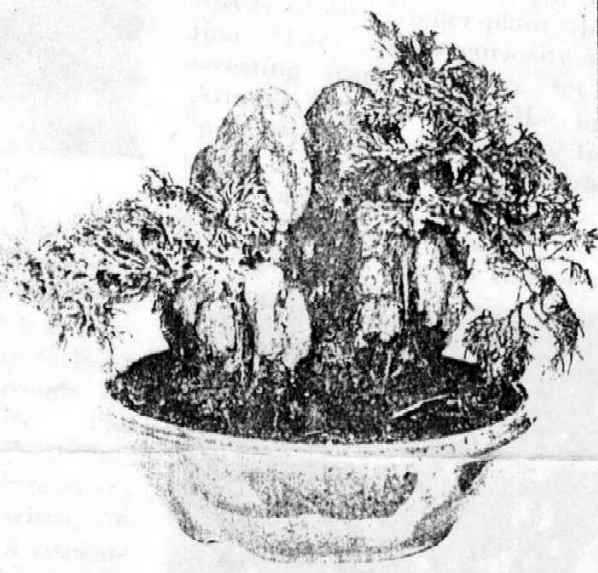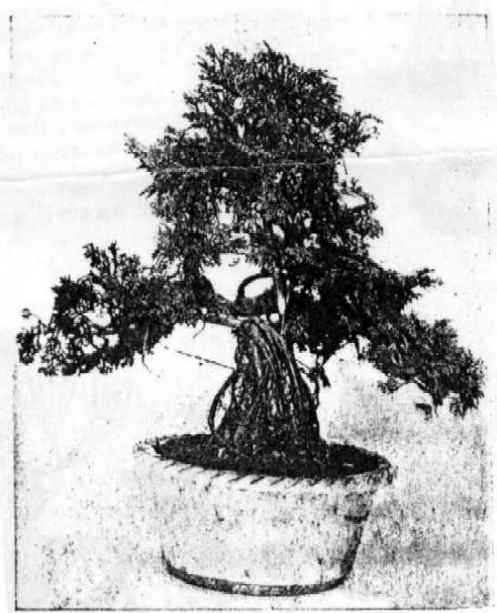| "Japanese Dwarf
Trees" by H. H. Berger (1909):
These charming dwarfed trees are
entirely a product of the patience and skill of Japanese gardeners.
The dwarfing of these is kept a secret by them and has as yet never been
found out [sic] or imitated to such a marvelous
degree by any other nation. While there are dwarf fruit-trees grown
in Europe, especially in Germany and Holland, no such tiny specimens have
ever been produced there. The trees which are used for dwarfing
by the Japanese embrace all varieties of conifers, such as pines, cedars,
cryptomerias, junipers; many evergreens, such as ilex, Citrus trifoliata,
etc.; some flowering plants like azaleas, maples; also some fruit trees,
such as oranges and plums, which blossom and bear the most tiny fruits
to perfection.
It is claimed for some specimens
of cedars that they are over five hundred years old. These very ancient
trees are handed down from father to son in some families, regarded as
priceless heirlooms. It is to be regretted that so many of these
beautiful dwarfed trees are lost through ignorance of the attention they
require. The danger lies in overcare more than in neglect.
Too many people imagine that these pretty foreigners need especial attention
and coddling, when, on the contrary, a great deal of fresh air, a reasonable
amount of water, and not too much warmth are the chief requirements.
They are all hardy, and too much warmth in overheated rooms is sure to
kill them [sic].
These dwarf trees are especially
pretty for dinner-table decorations, parlor ornaments, on verandas, etc.
Some of the larger and costly specimens make unique effects on spacious
lawns, on terrace sweeps or balustrades. I have known many a sick-room
cheered by the loving care of one of these dainty little trees.
|



